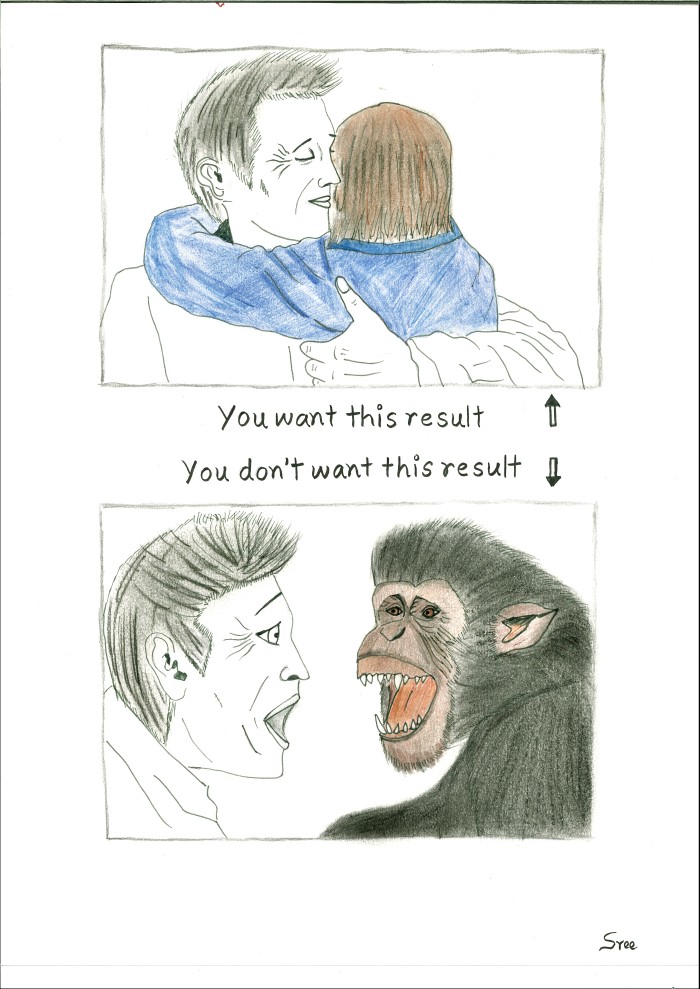
Dr Sreemoyee Roy Chowdhury and I have been working on producing storybook-format illustrations of common parenting challenges based on real scenarios narrated by foster carers to promote discussion of therapeutic reparenting techniques. We received some funding from Faculty of Health and Life Sciences Wellcome Trust Public Engagement Grants Scheme 2018 – 2019: Helping parents succeed. We plan to scale up previously developed work that uses simple illustrations and story narratives to allow carers an understanding of current research evidence of positive effects of parenting on children’s mental health and wellbeing. Story narratives have been shown to be a good way for people to engage with scientific information (Negrete & Lartigue, 2010). The narratives are instantly recognisable and relatable, since the illustrations are based on foster carers’ own experience, as well as easy to understand and remember.
See below for more background.
See below for more about our team.
This first illustration was an illustration based on stories from foster carers’ experiences. At times, from the carer’s point of view, it appears the child is not listening. Not engaging, even. Foster carers commented that the child’s hand is open in a sign of offering. A child in care may have experienced trauma and that may lead to patterns of responding that lie more in seeing carers as a threat, shutting down their ability to communicate and reason. They may be responding with the “reptilian” part of their brain and simply freezing. For both the carer and the child, this is frustrating. “It’s like arguing with a lizard; there is no point”.

Do you ever feel frustrated by trying to get your child to do what you want them to do? Maybe your child is over-active, hyper, and unwilling to listen. It seems nothing works to calm them down. This is illustrated below. However, carers said that they often have to pay attention to the child’s mood. Carers then change their parenting style to match what is being asked for by the child. If a child needs to finish a drawing but it’s bedtime, do you become rigid? Completely unyielding to the child? Well at times, carers said, it is easier to let go of trying to be the strict carer. They recognise that it may be easier getting the child to bed if they finish something first, particularly if it’s an activity that generally relaxes them.

This next illustration is based on my research on making eye contact. Eye contact helps in emotional connection between carer and child. Looking at the eyes helps people to know what emotions they are displaying. Did you know that many emotions rely on looking at the eyes? Think of how you communicate shock or fear, sadness, and disgust. A lot of that communication in body language is through what we do with our eyes. Our mouths generally only communicate happiness. Eye contact also helps in drawing the attention of the child to you, since they have to only focus on you and your words.
We chose to make these next illustrations a little bit more humorous!


Background
The challenges of caring for ‘looked after’ children often result in negative mindsets but recent research evidence shows that more positive parenting strategies can have real benefits for children’s mental health and wellbeing. My prior prize-winning research (Neville Butler Memorial Prize from ESRC and Longville) shows parents respond to their child’s problematic behaviour by “backing off” (Centifanti [nee Muñoz] et al., 2011) and feeling they want to give up (Fanti & Centifanti, 2014). The parenting stressors of caring for fostered or adopted children can lead to carers feeling unsupported (Ashmall & Cacciottolo, BBC News, 31 January 2017). Currently the UK has a record number of looked after children (Adoption Matters, personal communication, 14 March, 2019) and Adoption UK, estimates that ¼ of adoptive families are in crisis and in need of mental health services. Since many foster children have experienced childhood trauma with related challenging behaviours, they experience poor educational and employment prospects, as well as poor mental health and wellbeing (Pecora et al., 2006; Zlotnick et al., 2012). So, foster carers need to know current research evidence on changing behaviour in young people through therapeutic reparenting techniques. They are best placed to provide a warm, safe, consistent, and rewarding environment for young people and children in care.
The Team

This project combines expertise across psychology and English literature. I have received invitations to disseminate her research on child development and parenting for TEDx, Pint of Science, and International Centre for Life. Roy Chowdhury was invited to combine her critical analysis of Thomas Hardy writings with visual representations for an international conference in Dorset. The paintings have since been featured in Durham University’s award-winning dissemination blog – READ. Additionally, I’ve been a little more vulnerable in sharing my personal story. I feel that my personal experience allows foster carers to relate to me as well as my research which is informed by a passion to help children and young people avoid a short and unfulfilling life. My life story is a one of adversity and resilience. My parents were involved in chronic drug use and distribution and I experienced childhood abuse, extreme poverty, law breaking, and attempted suicide. My enthusiasm for making positive change for all children comes from my experiences in my own resilience.
